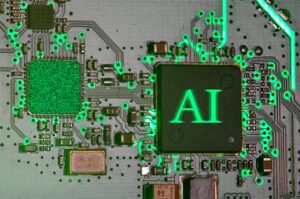The Integration of Vision, Speech, and Text in Multi-Modal Artificial Intelligence Systems

The Integration of Vision, Speech, and Text in Multi-Modal Artificial Intelligence Systems
When it comes to artificial intelligence, systems that specialize in one type of input, such as language, images, or sound, have long held the majority of the market share. But the intelligence of humans does not operate in isolation. When we read, hear, and see at the same time, we are able to combine the information from all of our senses into a coherent understanding of the world. This is the road that the next generation of artificial intelligence, known as multi-modal systems, is taking. Through the integration of vision, speech, and text, these models make it possible for robots to perceive, interpret, and communicate with the diverse capabilities of human cognition.
Can You Explain What Multi-Modal AI Is?
In artificial intelligence, a multi-modal system is able to process and relate information from a variety of input kinds, often known as “modalities.” Traditional artificial intelligence models may only be able to process text (such as chatbots) or images (such as facial recognition systems), while multi-modal AI incorporates both of these types of data. In addition to being able to interpret an image, it can also explain it using natural language, comprehend spoken inquiries about it, and even generate relevant visuals or sounds in answer to those questions.
You might, for instance, present a photograph to such a model and then inquire, “What exactly is going on here?” In addition, it will provide an explanation of the situation, identify individuals or events, and provide contextual responses to follow-up questions.
From Single-Modal Learning to Multi-Modal Learning: An Evolution
There were earlier AI systems that were domain-specific:
- Examples of photos and videos were examined by computer vision models.
- Text processing was done via Natural Language Processing (NLP).
Speech Recognition was able to turn audio into written words.
In contrast, these systems were kept separate. Through the use of a fusion layer, multi-modal artificial intelligence enables models to comprehend the links that exist between what they see, hear, and read. This comprehensive comprehension is necessary for thinking in the actual world; for instance, in order to comprehend a video instruction, one must be able to recognize the actions being performed visually as well as comprehend the narrative in a verbal sense.
Technologies Crucial to the Operation of Multilateral Systems
Several significant advancements have made it possible to make multi-modal AI:
- Transformer Architectures: Transformers, which were initially developed for text, have been converted for vision and audio, allowing for unified representations of many data kinds. Examples of transformers with this adaptation include GPT and BERT.
- Embedding Spaces That Are Shared Multi-modal systems map all of its inputs, including text, graphics, and sound, into a shared numerical space that allows for the analysis of relationships between the various inputs.
- Cross-Attention Mechanisms: These mechanisms enable the model to “focus” on relevant connections between modalities, such as associating particular words in a caption to specific regions of an image.
- Large-Scale Training Datasets: Models like as CLIP and GPT-4 have been trained on massive paired datasets consisting of images, text, and audio, which has enabled them to have a robust grasp of information from several senses.
The First Multi-Modal Models to Be Created
A wave of invention has occurred throughout the course of the past several years:
- Using millions of samples, CLIP (OpenAI) is able to learn the correlations between images and text and then connect pictures and words.
- DALL·E is a system that integrates vision and language in order to produce detailed visuals based on text queries.
- Whisper is able to comprehend multilingual speech and translate it into other languages.
- Both Gemini (developed by Google DeepMind) and GPT-4 (developed by OpenAI) are examples of the most advanced multi-modal reasoning systems currently available. These systems are able to analyze audio, images, and text within a single context.
- These models are not simply carrying out tasks; rather, they are training themselves to comprehend how various kinds of information reinforce one another, which brings artificial intelligence closer to actual contextual understanding.
Seeing, Hearing, and Reading: Explanation of the Operation of Multi-Modality
You submit a picture of a busy street in the city, and then you ask your artificial intelligence:
Please explain what is going on here and let me know if it appears to be a safe place for cyclists to ride.
It is possible for a multi-modal AI to:
- In this analysis, you will look for things like cars, pedestrians, lights, and the construction of the road.
- Contextual interpretation involves being aware of the fact that the presence of a high volume of traffic and the absence of bike lanes both contribute to an increased risk.
- Communicate your understanding by responding in plain language and potentially even producing a map or an audio explanation.
- It was only a few years ago that it was impossible to achieve this degree of integrated reasoning. Because of this, artificial intelligence is no longer merely able to recognize data; rather, it is able to comprehend it by utilizing cross-sensory connection.
Applications Across All Sectors of Industry
One: medical care
Alternate modes In order to provide holistic diagnoses, artificial intelligence can blend medical imagery, patient histories, and spoken input from medical professionals. For example, an artificial intelligence may examine an MRI scan and incorporate radiological notes in order to identify early warning symptoms of disease.
Educating oneself
Artificial intelligence instructors have the ability to combine written materials, verbal explanations, and visual diagrams in order to dynamically tailor lectures to the requirements of a learner. Students who are having difficulty with geometry could benefit from hearing an audio tutorial while also seeing visual examples.
Vehicles that drive themselves
Systems that are capable of driving themselves rely on visual sensors, data from LiDAR, and the ability to comprehend the meaning of traffic signs and spoken commands. With the use of multi-modal artificial intelligence, various inputs are able to collaborate in real time to secure decisions.
The Media and Creative Industries
Artificial intelligence models are now capable of generating full video scenarios from screenplays, creating synced soundtracks, and describing visual stuff in order to make it accessible. Film, advertising, and design are all being redefined by the concept of multi-modal innovation.
Service to the Customers
The next generation of consumer assistants are able to see and hear, reading uploaded photographs, listening to complaints, and replying in natural language across different channels. This is in contrast to the static chatbots that are now in use.
“Embodied AI” is just beginning to emerge.
Additionally, multi-modal comprehension is a prerequisite for embodied artificial intelligence, which refers to robots and digital assistants that interact with the real world. In order for computers to behave intelligently, they need to be able to feel and think about their surroundings in the same manner that people do. Through the integration of vision, speech, and text, robots are able to comprehend context, which encompasses not just things but also circumstances.
During a factory, for instance, an embodied artificial intelligence may observe a worker performing a task, pay attention to the instructions, and then replicate the behavior without being explicitly programmed to do so.
Limitations and Obstacles to Overcome
Despite its potential, multi-modal artificial intelligence is confronted with considerable challenges:
- Data Alignment: In order to train models, it is necessary to have text, image, and audio data that are exactly aligned. This type of data is difficult to obtain and standardize.
- Due to the fact that multi-modal systems might inherit biases from visual or verbal data, which can result in distorted interpretations, fairness is an important consideration.
- Interpretability: As models become more complicated, it becomes increasingly difficult to comprehend how they arrive at their conclusions.
- Costs of Computation: Multi-modal training is resource-intensive, requiring a significant amount of computer power and extensive amounts of energy.
- When these hurdles are overcome, the level of safety and effectiveness with which multi-modal AI is integrated into everyday life will be determined.
Humans and machines are redefining their communication with one another.
The ability to communicate is where multi-modal artificial intelligence excels. The natural flow of human interaction, which includes speaking, pointing, demonstrating, and writing, is understood by these systems. This is in contrast to the traditional method of pushing humans to adapt to fixed input forms, such as typing commands or pressing buttons.
In its most basic form, multi-modal artificial intelligence is breaking down the barriers that separate digital and human communication, thereby paving the way for conversational computing that is intuitive.
Moral and Social Consequences of the Situation
Ethical problems become more pressing as artificial intelligence (AI) develops to see the world in the same way that humans do. When artificial intelligence-generated art or media arises from these models, multi-modal systems create privacy concerns (for example, processing face photos or voices), risk misuse in surveillance or misinformation, and challenge our conceptions of authorship. They also raise concerns about the potential for misuse.
It is of the utmost need to guarantee transparency, obtain consent, and deploy multi-modal AI in a responsible manner as it becomes increasingly integrated into both public and personal life.
A Step Towards Unified Intelligence Regarding the Future
In the long run, the goal of multi-modal artificial intelligence is not simply to analyze inputs; rather, it is to comprehend the world in its entirety. Imagine an artificial intelligence that are able to watch a documentary, study the research article that is relevant to the topic, listen to a debate on the subject, and then synthesize a conclusion that is coherent. This is the future that academics are working toward: the implementation of artificial global perception, which will serve as the basis for really general intelligence.
One of the most significant advances in artificial intelligence that has occurred since the development of deep learning is multi-modal AI. It is becoming increasingly possible for machines to experience the world in ways that are similar to how humans see it by combining vision, speech, and text. The transition from narrow, task-specific artificial intelligence to systems that are capable of reasoning across sensory boundaries is the result of this integration.
As these technologies continue to advance, the relationship between humans and machines will shift from one of command-based interaction to one of actual understanding. This will usher in a world in which artificial intelligence will not merely interpret our words but will also comprehend our world.




